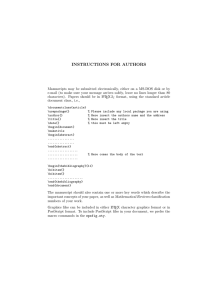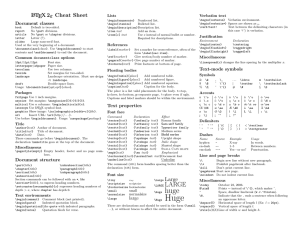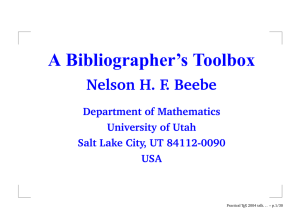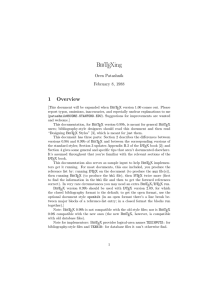The Title of Your Paper Your Name
advertisement
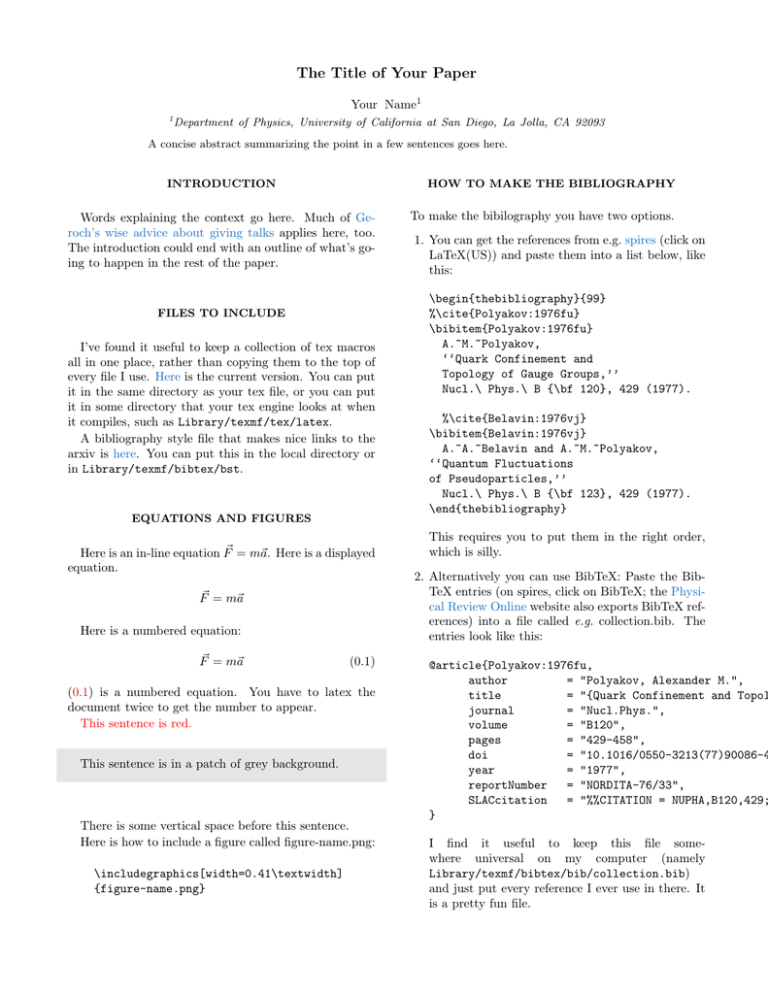
The Title of Your Paper
Your Name1
1
Department of Physics, University of California at San Diego, La Jolla, CA 92093
A concise abstract summarizing the point in a few sentences goes here.
INTRODUCTION
HOW TO MAKE THE BIBLIOGRAPHY
Words explaining the context go here. Much of Geroch’s wise advice about giving talks applies here, too.
The introduction could end with an outline of what’s going to happen in the rest of the paper.
FILES TO INCLUDE
I’ve found it useful to keep a collection of tex macros
all in one place, rather than copying them to the top of
every file I use. Here is the current version. You can put
it in the same directory as your tex file, or you can put
it in some directory that your tex engine looks at when
it compiles, such as Library/texmf/tex/latex.
A bibliography style file that makes nice links to the
arxiv is here. You can put this in the local directory or
in Library/texmf/bibtex/bst.
EQUATIONS AND FIGURES
Here is an in-line equation F~ = m~a. Here is a displayed
equation.
F~ = m~a
Here is a numbered equation:
F~ = m~a
(0.1)
(0.1) is a numbered equation. You have to latex the
document twice to get the number to appear.
This sentence is red.
This sentence is in a patch of grey background.
There is some vertical space before this sentence.
Here is how to include a figure called figure-name.png:
\includegraphics[width=0.41\textwidth]
{figure-name.png}
To make the bibilography you have two options.
1. You can get the references from e.g. spires (click on
LaTeX(US)) and paste them into a list below, like
this:
\begin{thebibliography}{99}
%\cite{Polyakov:1976fu}
\bibitem{Polyakov:1976fu}
A.~M.~Polyakov,
‘‘Quark Confinement and
Topology of Gauge Groups,’’
Nucl.\ Phys.\ B {\bf 120}, 429 (1977).
%\cite{Belavin:1976vj}
\bibitem{Belavin:1976vj}
A.~A.~Belavin and A.~M.~Polyakov,
‘‘Quantum Fluctuations
of Pseudoparticles,’’
Nucl.\ Phys.\ B {\bf 123}, 429 (1977).
\end{thebibliography}
This requires you to put them in the right order,
which is silly.
2. Alternatively you can use BibTeX: Paste the BibTeX entries (on spires, click on BibTeX; the Physical Review Online website also exports BibTeX references) into a file called e.g. collection.bib. The
entries look like this:
@article{Polyakov:1976fu,
author
= "Polyakov, Alexander M.",
title
= "{Quark Confinement and Topol
journal
= "Nucl.Phys.",
volume
= "B120",
pages
= "429-458",
doi
= "10.1016/0550-3213(77)90086-4
year
= "1977",
reportNumber
= "NORDITA-76/33",
SLACcitation
= "%%CITATION = NUPHA,B120,429;
}
I find it useful to keep this file somewhere universal on my computer (namely
Library/texmf/bibtex/bib/collection.bib)
and just put every reference I ever use in there. It
is a pretty fun file.
2
Then, instead of the bibliography list, place this
command before the end:
Acknowledgements
\bibliographystyle{ucsd}
\bibliography{collection}
Here you can acknowledge people who helped you.
The style file being included here (ucsd.bst) is
here. In this case, to compile you will have to
run latex then bibtex then latex again (maybe once
more for good measure) to get everything in the
right place.
In either case, cite a paper like this: [1] and this: [2]
and this: [3].
[1] A. M. Polyakov, “Quark Confinement and Topology of
Gauge Groups,” Nucl.Phys. B120 (1977) 429–458.
[2] A. Belavin and A. M. Polyakov, “Quantum Fluctuations
of Pseudoparticles,” Nucl.Phys. B123 (1977) 429.
[3] B. Swingle, “Entanglement Renormalization and
Holography,” Phys.Rev. D86 (2012) 065007, 0905.1317.

